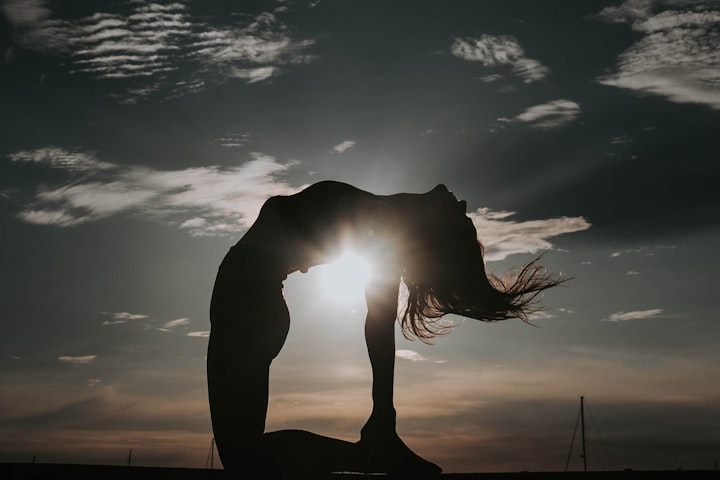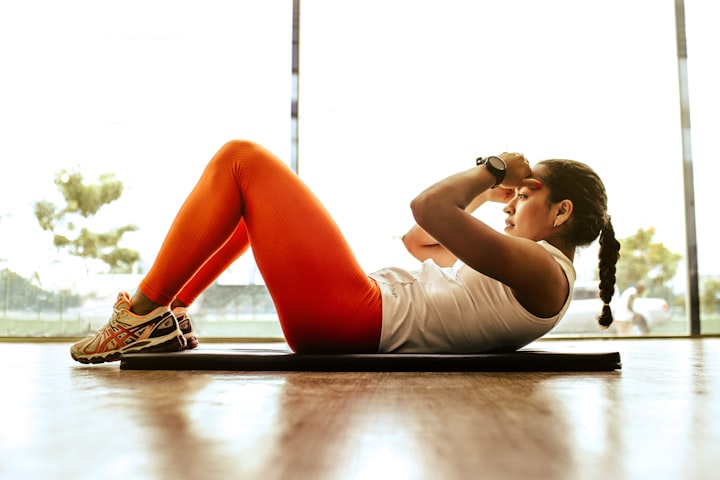7 Ways Yoga Can Help You to Reach Your Highest Potential
Your entire being needs yoga

Many in the U.S. come to yoga for physical benefits but later find that they receive so much more. Yoga is still underestimated, or perhaps misunderstood, by western media outlets. Yoga gets to the heart of the person. The yoga practitioner goes through a process of pulling back layers until they reach their center, where there is only infinite consciousness. But how one reaches this true nature is really interesting, from a natural, psychological, and humanistic perspective.
Nature
All of nature needs to maintain a balance to perform optimally. Humans are a part of nature. We have certain needs necessary for survival- food, water, shelter, sex, community, etc. Those are the obvious ones.
But humans also need to practice intelligent physical movement, mindfulness, controlled breathing techniques, and relaxation to access their highest spiritual self and live to their fullest potential. So, yoga accesses the core of human needs- physically, mentally, emotionally, and spiritually. Recognizing our own nature and the nature of all around us can really be impactful.
Physical Movement
But humans also need movement. Our bodies were designed to move. We have mechanical levers, muscles, ligaments, tendons, etc. that assist the human body in movement. Movement of the body circulates the blood, which transports nutrient-rich, life-sustaining, oxygen throughout. Physical movement stimulates so many other processes within the human body- the cardiovascular, the respiratory, the lymphatic, the elimination system, etc. Everything is connected. A stagnant body is not a healthy body. Movement is a big part of healthy living.
Taming the monkey mind
In order for a yogi to safely practice the physical yoga postures, they need not be flexible; they need to be present in their body. Yoga goes the opposite way of western culture’s ‘do’, ‘do’, ‘do’! Yoga says ‘stop’. First, let’s stop everything and calm the mind. A yoga teacher will instruct deep diaphragmatic breathing techniques. He or she may guide a visual meditation. The idea is to be mindful. Halt the mind’s hopping from thing to thing.
We first train the mind to observe the body breathing, expanding and contracting. This activates the body’s parasympathetic nervous system, calming and soothing the body, while also giving the mind something to do. When mind has a task, mind is content. But we must tame it, by constantly guiding it back to this breath, this moment.
Emotional
Yoga asks us to ask ourselves “what are we feeling?” in each breath and in each posture. Yoga also asks us to stay with the feeling and keep breathing. Sometimes we weep. Other times we feel tense. There are times we may feel angry. Any and every emotion can come out when in this space. It usually comes as a surprise to the practitioner. The idea is that we are creating a healing space within the body, within the aware and focused mind, and within the community space in which this transformation is happening.
There is a lot of research being done about trauma being stored in the body. Dr. Bessel Van der Kolk is a leading psychological researcher studying trauma who states that the way one holds their body can affect their mental state, and vice versa. Bodywork can be incredibly helpful for the emotional system.
Breathwork
The rate and the depth at which one breathes can dramatically affect one’s health in numerous ways. One is physically, to circulate oxygen, regulate the heart rate, etc. Another is to alter one’s emotional state. A third is to alter the body’s temperature. A fourth is to keep the mind focused and tame. Conscious control of breath helps the yoga practitioner alter their reality. It alters the yogi’s internal world as well as how the external world affects the yogi. Everything is connected. The yogi must stay connected with his or her breath to maintain balance throughout all systems.
Human Touch
Oftentimes in a yoga class, a yoga teacher will offer hands-on assistance or adjustments. The yoga teacher is to have permission before stepping into a student’s space and laying hands on them. The hands-on portion can be in the form of guiding a student’s alignment. Or more traditionally, assisting one’s savasana by effleurage or pressing shoulders. This helps the student’s body ground, surrender, release, and relax into infinite consciousness.
Human touch is a tremendous help in assisting some students to let go. We are all bound by primal psychological instincts- we need others to survive. This is why human touch tends to really impact a student’s practice and also their healing of perceived isolation. We are born feeling a sense of trauma, a separateness from God. Then we meet our mother, or primary caregiver, and get into the groove of being a human. We are separate, individuals, yet we are all connected- to God and each other.
Spirituality
This brings us here to my last point- yoga impacts one’s connection with their spiritual self. As I said in the beginning, yoga is a peeling back of the layers that keep one’s earthly self separate from their spiritual self. When we live in accordance with the yamas and the niyamas, we are behaving spiritually. We are connecting to the world and to ourselves in a wholesome manner.
When we actively practice healthy body, healthy mind, healthy emotions, healthy breath, we find ourselves at a place that goes beyond this material world. There are many different avenues to take to get to this place of peace, wholeness, and oneness.
Yoga is one way in which one can more easily access meditation. Meditation takes the human brain through waves of deepening consciousness. One truly does sink inward. The outside world remains the same, but in consciousness, it dissolves. It no longer affects the yogi the way it once did before one began practicing.
To practice yoga and meditation is to see the duality- the double existence of an inner world full of unlimited freedom. While simultaneously living in an outer world limited by perceptions and man-made limitations.
We are both, human and spirit. The two are actually one, living under the veil of maya, or illusion. Until one’s practice of yoga brings them to realize this Truth.
Continued yoga practice, as holistic care, can bring a person a lot closer to their highest potential. Humans require the basics of food, water, shelter, and sex. That is great for survival.
But to thrive as human beings, we need to consider living in harmony with nature, physical exercise, tempering the monkey mind, allowing emotional release, conscious breathing, safe and dignified human touch, and spiritual connection to something greater than I.
About the Creator
Bridget Vaughn
Bridget Vaughn is a Freelance Writer and a Yoga Teacher with a passion for creating meaningful heartfelt content.






Comments
There are no comments for this story
Be the first to respond and start the conversation.